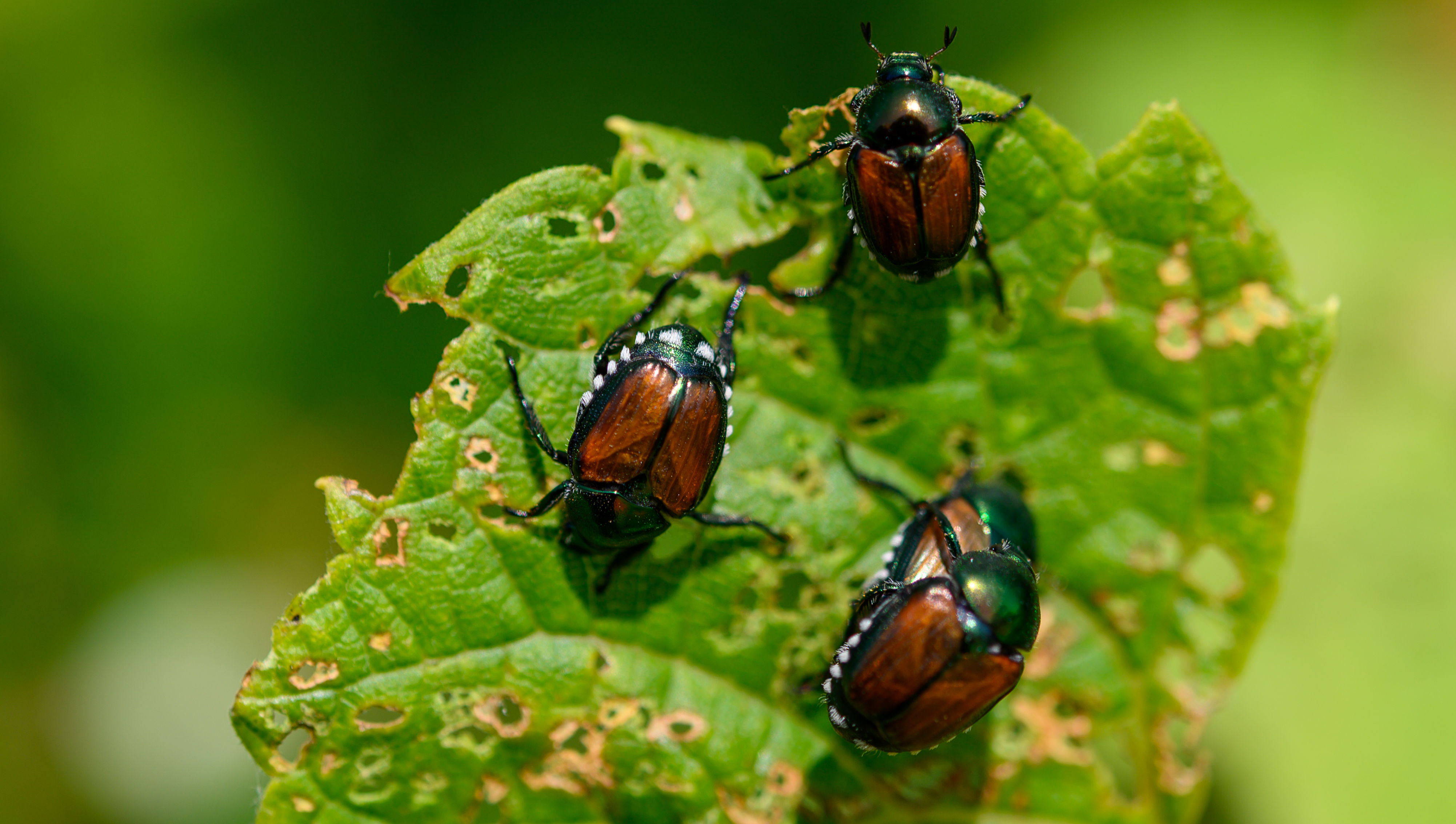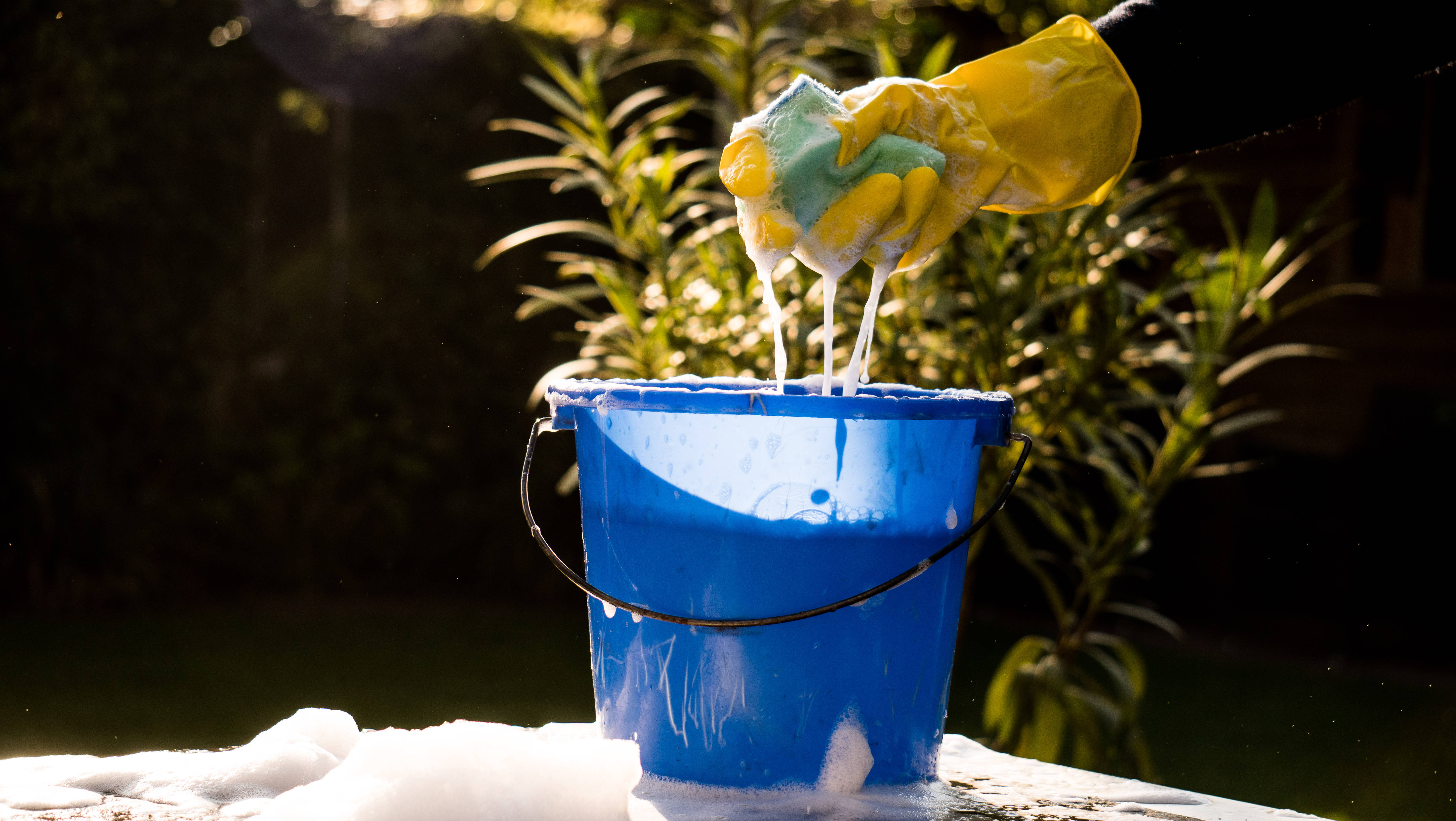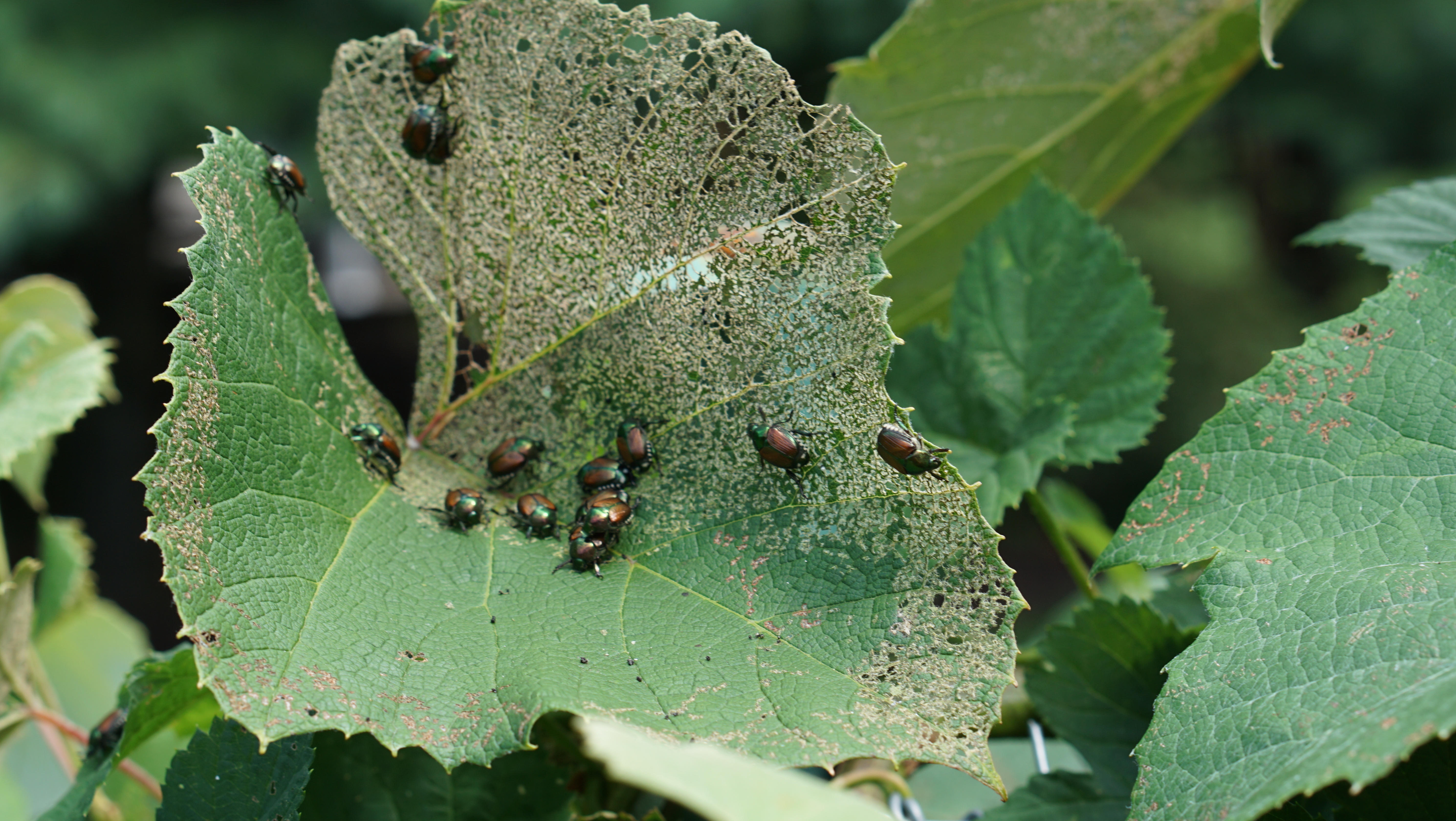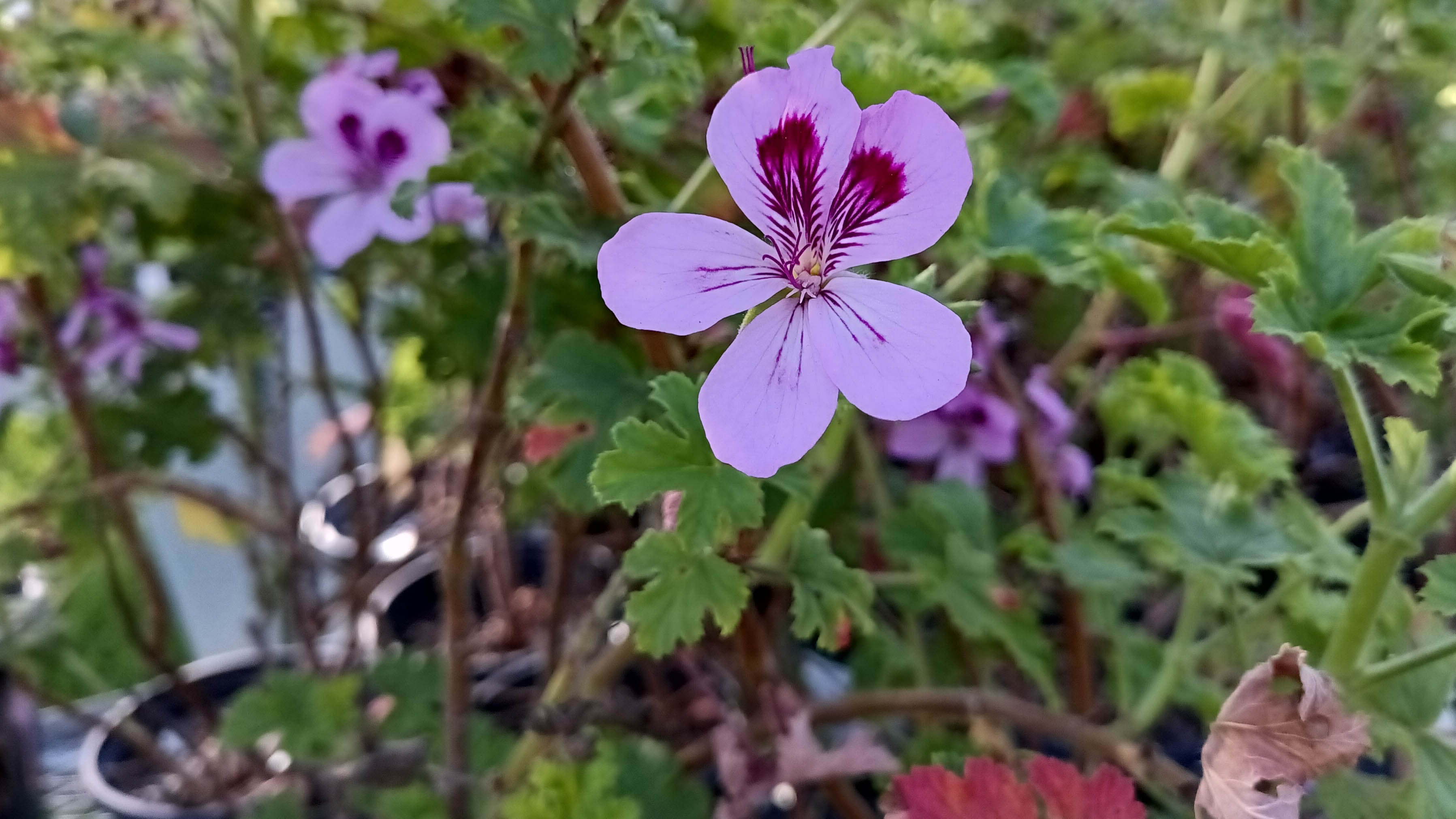7 ways to repel Japanese beetles and keep them out of your yard

Japanese beetles are a serious problem for yard owners. The green and coppery-winged pests are known for feeding on leaves, flowers, crops, soil, and over 300 types of plants causing real damage. A quick search online to try and solve the problem can produce overwhelming results, some of which may end up proving harmful to other plants and wildlife nearby.
While chemical pesticides may work at getting rid of most Japanese beetles quickly, they won’t eradicate the problem completely and will require repeated and expensive use. Plus, those insecticides you’re using aren’t going to help your plants to flourish either as their effects will also target your yard pollinators; bees, birds, and butterflies, all of which will help the overall growth of your plants. In fact, here are 9 things to consider before using pesticide on your yard. So, you’ve found yourself between a rock and a hard place.
Both as adults and grubs (larval stage), Japanese beetles are destructive to your yard. At their adult stage, they’ll feed on your plants and fruits and, as grubs, they’ll wreak havoc on your soil and roots. According to the United States Department of Agriculture, efforts to control Japanese beetle infestations in the U.S. are estimated to cost more than $460 million a year.
Essentially, there’s no quick fix. Luckily, if you’re looking for natural ways to rid your yard of these pests, here are 7 ways to repel Japanese beetles and regain control over your crops.
Plus, here's 7 best pest-resistant plants for a bug free yard.
1. A water and soap solution

Creating a simple water and dish soap solution can work in your plight against Japanese beetles. Water alone won’t trap the beetles, but used alongside soap, it works as a way to trap them beneath the water’s surface. You can either create your solution in a bucket and sweep the Japanese beetles off your plants into it, or load your solution into a spray bottle for a more targeted approach, spraying the beetles and knocking them off the plants onto the ground for predators to eat.
Another helpful tip here is to put down a dropcloth near your plants in the early morning when the beetles are at their most active. Once their high activity period is over, roll up the dropcloth (this one from Utopia is $21 on Amazon and machine washable) and shake them into your bucket of soapy water. This is a really fruitful and organic way of removing a lot of Japanese beetles in one go.
Get instant access to breaking news, the hottest reviews, great deals and helpful tips.
2. By hand

Another really effective way of clearing your yard of Japanese beetles is to pick them off your plants by hand. Whilst these pesky insects are damaging to your plants, they won’t cause harm to you if you touch them and, thankfully, they’re also quite slow movers making them easy to catch. With some time and patience, you can pick them up by hand (we'd recommend investing in some of the best gardening gloves) and drop them in the water and soap solution mentioned above.
This is quite a time-consuming method for removing Japanese beetles though. If you’re looking to get a bit more creative, there’s a few DIY ways of fastening up the process on TikTok, from a milk jug and hoover, to a modified lure trap.
3. Geraniums

Geraniums are great flowers for deterring a wide range of pests, including mosquitoes and leafhoppers. For Japanese beetles though, geraniums actually attract the pest as they’re one of the many plants they like to eat. While this may sound counter-productive, the petals of geraniums contain a substance that temporarily paralyzes Japanese beetles when consumed, making it a perfect addition to your yard to keep it pest-free. What's more, adding geraniums will have other benefits, such as attracting butterflies to your yard.
So, planting some geraniums tactically near the plants you want to protect from Japanese beetles and their natural chemicals will help to stun the pest long enough to buy you time to remove them from your yard. Japanese beetles usually recover within 24 hours of the geraniums’ effects though, so you’ll need to act fast and keep an eye to take advantage of the geraniums' effects. Alternatively, nature’s predators may clear up some of the pests for you when they come across the immobile Japanese beetles on the ground.
4. Set Japanese beetle traps

There are specific yellow Japanese beetle traps that can be bought (Spectracide sells a pack of 4 for $34 on Amazon) to hang in your yard, which lure male beetles in and deter them from mating. While they’re an effective way of getting rid of pests in your yard, if not used correctly, they can make the situation worse. Incorrect use of the traps will end up attracting more pests to your yard.
So, many expert gardeners recommend hanging a trap at least 30 feet away from your plants to avoid making the problem worse. If they’re placed too close, Japanese beetles won’t be the only pest causing you trouble as the lure will attract a variety of yard dwellers to the plants you’re trying to save.
5. Neem oil

Neem oil, much like the water and soap solution, is another natural way of ridding your yard of Japanese beetles. This organic insecticide, found in the seeds from the neem tree, won’t harm people, animals, and a variety of wildlife as it’s specifically a deterrent for pests that love to damage yard plants.
The active ingredient in neem oil, azadirachtin, is a proven repellent and killer of pests. It’s best sprayed on your plants in the morning or evening when the beetles are least active. Another great tip is to use neem oil when the sun is low to avoid burning foliage.
Neem oil should be sprayed both on the plants and soil to target the adult and grub variant of the beetle. While you can buy neem oil solutions directly from retailers, you can make your own by mixing four cups of warm water and half a teaspoon of dish soap together followed by slowly adding 1 teaspoon of neem oil and mixing into a spray bottle. The dish soap works as an emulsifier to make sure the oil and water mix well together.
6. Row covers

Row covers are another excellent way of keeping a Japanese beetle infestation under control, as well as deterring Japanese beetles in the first place. The protective transparent sheeting can be placed over your plants to keep pests out while still allowing in light, air, and water in.
In terms of plant growth, row covers still let in sunshine and moisture, but they also keep out your friendly garden pollinators, so long-term use is not advised. When your plants need pollinating, row covers should be removed. Therefore, this technique is best used during the Japanese beetles’ 6-to-8 week feeding period around June to August time.
7. Fruit cocktail

Finally, a fairly inexpensive way of ridding your yard of Japanese beetles is by picking up a tin (or two) of fruit cocktail from the store. Sounds too easy? Well, to lure and trap the pests, you’ll first open the can and allow it to ferment in the sun for a week. Once fermented, place the can in a pail of soapy water filled just below the top of the can. The beetles will be attracted to the rotten fruit scent and in attempting to reach it will fall in the pail and drown in the water around it.
Much like the Japanese beetle traps though, you’ll want to position your tin of fruit cocktail approximately 25-30 feet away from the plants that you’re aiming to protect in order to lure them and any other pests away from your plants rather than towards them.
More from Tom's Guide
- 7 ways to repel aphids and keep them out of your yard
- 9 things you didn't know you could do with borax
- 7 essential things to keep on your nightstand

Grace is a freelance journalist working across homes, lifestyle, gaming and entertainment. You'll find her writing for Tom's Guide, TechRadar, Space.com, and other sites. If she's not rearranging her furniture, decluttering her home, or relaxing in front of the latest streaming series, she'll be typing fervently about any of her much-loved hobbies and interests. To aid her writing, she loves to head down internet rabbit holes for an unprecedented amount of time.
